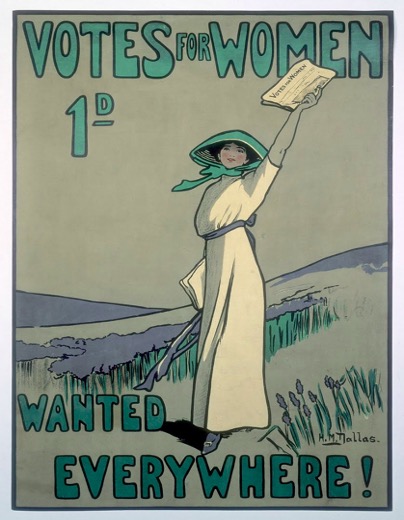
August signals several things, like the unofficial end of summer and the beginning of a new school year. It also has some interesting, lesser-known days hidden within it, e.g., Women’s Equality Day on Sunday, August 26, which pays homage to women’s history.
Women’s Equality Day was recognized under law in 1973. It was originally presented by Rep. Bella Abzug, a Democrat from New York also known as “Battling Bella.” The United States House of Representatives’ archives notes that she was a feminist and civil rights advocate. “She gained notoriety as one of the most colorful and controversial House Members during the 1970s,” the archive noted.
It’s no surprise, then, that Abzug introduced the idea of Women’s Equality Day. However, it took an additional two years, up until 1973, for Congress to officially recognize it.
Below are six additional interesting facts to know about the day:
1. It Pays Homage To The 19th Amendment
The 19th Amendment was an addition to the constitution that gifted women the right to vote. Although, at the time, it primarily benefited white women. It was the result of almost a century of protest. The 19th Amendment was officially ratified on August 18, 1920.
Abzug proposed Women’s Equality Day as a way to pay homage to the suffrage movement.
2. Tennessee Was The Final State Needed For Ratification
In order to ratify the constitution today, three-fourths of the states need to approve. To add the 19th Amendment, the Suffrage Movement needed 36 states to back them. On August 18, 1920, Tennessee became that final state, creating what’s also known as “Ratification Day.”
In a special session on August 9, supporters of the movement wore yellow roses. The Senate voted in support, but the House was tied. It took three votes before Harry Barn from East Tennessee voted yellow, after receiving a letter from his mother, telling him to “put the ‘rat’ in ratification.”
3. It’s Not Actually A National Holiday
Yes, that’s right. Although Congress recognized Women’s Equality Day all the way back in 1971, it’s not actually a recognized national holiday.
What passed was the president’s ability to give a proclamation about the day, but nothing about making it a federal holiday. Still, that’s not going to stop people from celebrating.
4. 50,000 Women Marched In 1971 On This Day
The same year Women’s Equality Day was officially recognized by Congress, on August 26, 50,000 women marched in New York City for the Women’s Strike For Equality March.
The march was the brainchild of Betty Friedan,who wanted to show the American media the power of second-wave feminism.
5. Over 3,000 Women Ran For Office Before They Could Vote
Women couldn’t vote until the 19th Amendment was passed, but nothing technically prevented them from running for office. So, they did – 3,586 women ran in 4,927 campaigns before women received the right to vote.
6. The First Women In Congress Was Elected In 1916
That’s right – even before women had the right to vote, one woman was elected to office.
In 1916, Jeannette Pickering Rankin was elected to represent one of Montana’s two districts. She had a commitment to pacifism, women’s rights, and civil rights.
Guaranteeing women’s rights continues to be an issue, even in 2025. In the United States, women continue to fight for reproductive rights, equal pay (addressing the wage gap), and against forms of abuse, like sexual violence. Women of color also fight along the intersections of both race and gender.






